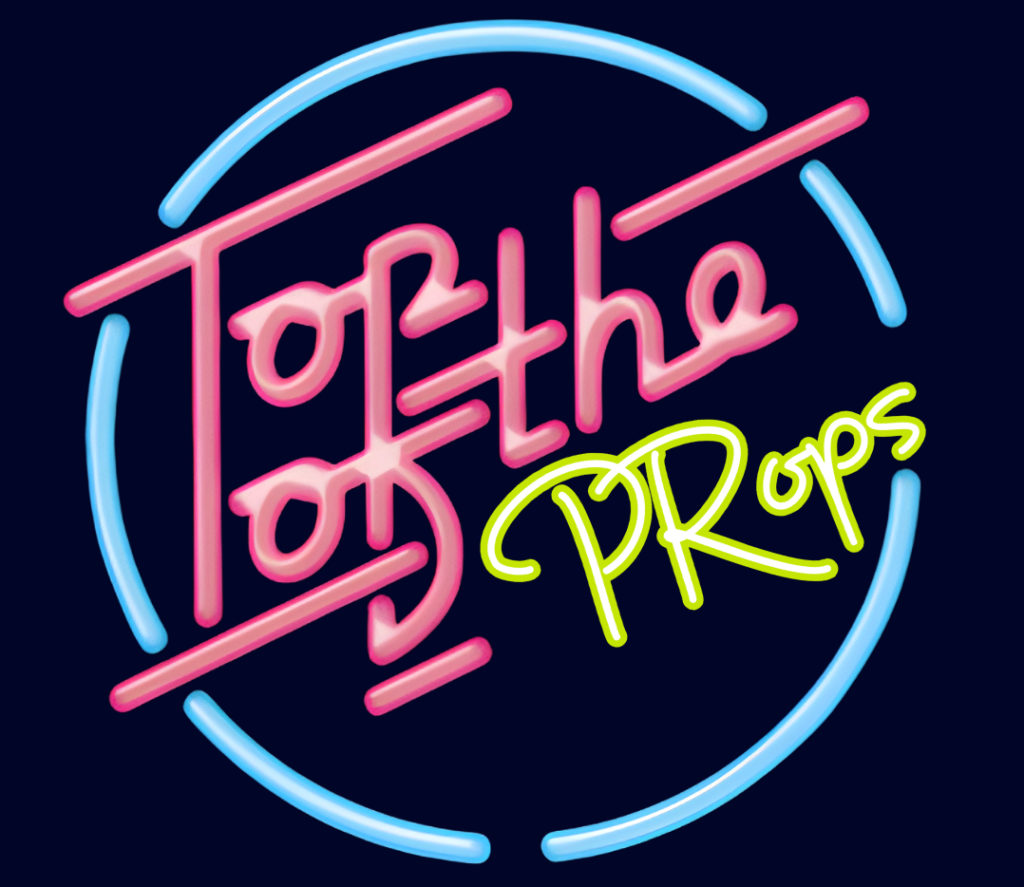
Germany – PR & Communications Salary Guide: 2025
We create our salary guides with the aim of them

We’ve analysed and aggregated over 200 2024 PR trends and predictions from industry experts to create a list of the top 10 with the most props
As ever it does, the turn of the year has brought forth a slew of industry predictions. PR and Comms wizards from every corner of the internet dust off their crystal balls, unsheathe their pens and channel their inner clairvoyant so as to produce helpful guides on the big trends 2024 will likely bring.
However, due to the number of predictions put forth each year, and each with a slightly different flavour of prophecy – it can become somewhat cumbersome to keep up with each new instalment as well as unpick the stellar divination from the SEO land-grabs and those birthed at the business end of the content equivalent of an MG 42. So, in the immortalised words of Flash’s Karl Howman – we’ve done the hard work, so you don’t have to.
We’ve analysed articles and predictions from 100 industry leaders across 35 agencies and service providers for a total data pool of over 200 different opinions and predictions. We’ve aggregated those predictions to create a top 10 list of the most prevalent as well as compiling a side list of other honourable mentions.
Therefore – this is a list with a twist and we hope the below is helpful in cutting through the noise rather than adding to it. The bar chart beneath shows the top 10 trends for 2024 by proxy of number of mentions from analysed articles and you can find a bit more detail as to what experts have said on the topics in descending order below, with honourable mentions at the bottom.

1. Artificial Intelligence
To the surprise of no one, from the articles we reviewed the most talked about trend for 2024 was the continued acceleration of AI’s integration into the daily lives of PR & communications professionals. This is not breaking news, AI made rapid strides in 2023 and with the improvements in NLP technology, the advancement of the core computing technologies that underpin AI, and the increase in competition in the space – by 2027 the PR specific AI tools market is expected to have almost tripled. 2024 is seemingly to be a seachange moment for AI in PR and Comms.
The fact is most are already using it (read: if you’re not, you should be) however, from the data we reviewed, the sentiment seems to have evolved from last year. No longer is the focus on where AI may cause human obsolescence but a rather more optimistic view of where the application of AI in conjunction with a human touch can unlock potential, free up time and create headspace for professionals to focus on tasks that AI is simply not (yet) equipped to handle. Moreover, the narrative consistently leans into the clear need for agencies and businesses to invest meaningfully into upskilling and providing applied training in the use of AI tools and technologies, for junior and seniors alike, further cementing AI as a tool to support, not replace.
Across the multitude of predictions centred around AI, the most commonly used words were ‘efficiency’ and ‘productivity’ but, interestingly, there were considerably varied points of view as to where exactly the application of AI may be most relevant or immediate. Given this, from our point of view, it stands to reason that 2024 is also likely to be a year where this differentiation in approach, prioritisation and investment will mean the emergence of leaders in the space.
2. Credibility & Authenticity
The importance of credibility and authenticity for brands in 2024 was referenced in almost all of the 2024 PR and Comms prediction articles we reviewed to compile this list and was the 2nd most referred to after AI.
The general consensus was that there is a high level of fatigue with what has become the steady drumbeat of click-bait and fake news across media and social, which will likely only increase with use of AI content generation tools. In tandem to that there is also an ever thicker layer of cynicism growing on consumers around brands and their messaging. More and more people are looking for trust markers in the things they consume and have an increasing arsenal of due diligence tools at their disposal to call bullshit. Elon’s gamble with the artist formerly known as Twitter is a good example, with its reduction in moderation increasing the amount of fake news and ad spamming on the site, as well as allowing pedallers of misinformation, like Alex Jones, back on the platform, Elon’s X was worth half of what he paid by the back end of 2023.
A lack of credibility and authenticity in your PR and Comms is bad for business in 2024 and the democratisation of trust through review platforms and the like means it’s getting harder and harder to be successful if you are all blue tick and not actually verified.
3. Purposeful Content
The phrase “Content is King” is still ringing true in 2024, however with the slight amendment of purposeful content is king. Coming in as the 3rd most widespread trend predicted for 2024, consumers are tired of being flooded with masses of irrelevant content simply so a brand can be seen to be “active” and “engaging”. The use of carefully curated content, really showcasing a brand’s ethos and messaging is going to be particularly effective in translating to engagement this year.
On social media, where it is easy to consume a lot of different content, it has been suggested that brands will need to work hard to make sure they have a niche – and are producing relevant, engaging content for their target audiences. Consumers are aware now of brands jumping on bandwagons to appear relevant, and because of this are actually losing consumer trust. Brands should stick to what they know, and not just ride the coattails of what is currently popular or trending.
4. Issues & Crisis
Another consistently repeated consideration taking centre stage is the clear view that proactive issue preparedness and pre-emptive crisis planning should be a core focus in 2024. The speed with which a minor problem can become a major issue has never been quite so ominous and the landscape heading into 2024 is only predicted to exacerbate the situation.
Trust in governments, traditional media and business has hit new lows. A growing percentage of the population, driven by the younger generations, rely increasingly on social media for their news. Influencers command increasingly more sway in influencing (shock!) their community’s viewpoints and spending habits. Consumer activism is an ever growing threat to managing brand reputation. Geopolitical events threaten the stability of world markets, with unforeseeable implications and the number of elections in 2024 are unprecedented in our history. Forward-thinking companies, brands and consultants must assess cross channel risks and engage in active issues preparedness and scenario planning to ensure they’re best prepared for economic, societal and reputational shocks.
Happily, over the past couple of years we have seen more and more businesses place communications at the very heart of corporate governance, business strategy and leadership. Indeed we are seeing a growing number of Chief Communications Officer roles joining the C-suite of businesses either alongside or in place of Chief Marketing Officers, pointing to a much heavier reliance on communications as a pro-active tool, rather than a reactive function.
5. Human Touch
As the nemesis of what seems to be the steady march to an uncomfortable reliance on AI, another of the most common themes featured by industry leaders was around the importance of the human touch and the growing currency of empathy.
This was referred to under a number of guises but most come to a steady orbit around one common idea – in a landscape of increasing automation and the reduction of human input for efficiency purposes, the human ability to demonstrate value through quality of work or ‘good PR’, as one speculator put it, is a USP that should be capitalised on. This was pointed to as showing value to the industry at every touch point by continuing to apply strategy, understanding and EQ to the work vs leaning too heavily into automation. Examples given were things like providing as much value to journalist contacts as possible to foster relationships and better outcomes, focusing on higher quality non-AI generated content and relying less on generic automated communication tools.
Empathy also featured as a solid facet of this theme. Not just as a communications alamo to differentiate from AI, but that given the plethora of struggles people have faced over the past few years, and continue to contest with going into 2024, brand values around empathy will be important to striking the right tone both internally and externally.
6. Multi-Channel Media
The 6th most common trend we have identified across the multitude of articles reviewed is the importance of using multi-channel media in 2024. Brands and their agencies alike need to be conscious of producing content for various different media channels. Platforms such as Snapchat, Medium, Clubhouse, Discord, Twitch and Youtube shouldn’t be forgotten with the rise of Instagram and TikTok. Different demographics engage with each platform differently and in order to reach either larger or more varied audiences brands should be producing content across multiple channels.
7. News via Social Media
The 7th most prevalent trend picked out by industry experts for 2024 is the continuing rise of access to news via social media, driven by and large by the younger generations, such as Gen Z. The younger generations are continuing to shy away from more traditional news access, such as searching for news, or watching dedicated news channels. Instead, their preference for news consumption via apps they are already using, such as Instagram and TikTok, prevails with news articles peppered in amongst regular scrolling. This is a trend the experts think will continue to grow momentum.
Many news outlets such as BBC News, Evening Standard, CNN, Sky News, agree and have been busy launching TikTok channels to reach these younger audiences – the BBC News TikTok channel experienced a staggering 2128% growth in followers from May 2022 to Jan 2023, and now boasts 2.9 million followers, and Sky News has an even more impressive 5.4 million. With Gen Z now between their early to late 20s, they are an increasingly important demographic for communications strategies of all shapes and sizes, from sales to politics, and everything in between.
8. Influencer Marketing
Following on nicely from social media, at number 8 is the use of influencer marketing. Influencer marketing was one of the biggest trends of 2023 and is forecast to become an even bigger trend in 2024. An estimated $21.1 billion was spent globally in 2023 on influencer marketing, translating to 11% of brands considering influencer partnerships their primary marketing method. This is around a 30% increase from the 2022 figure, and the figures have more than doubled since 2019, demonstrating the importance of influencers in the market today. As a result of this, there has been an influx of influencers for every conceivable area of the market (from mummy bloggers, to DIY influencers, to train enthusiasts), influencers are fast becoming some of the most trusted sources for marketing.
Influencers bring with them a built community of loyal and engaged fans that brands can leverage to market their products or services to. Many of the platforms influencers rely on such as social, podcasts etc. are relatively simple and cost effective ways to reach larger curated audiences than traditional marketing practices and activate powerful positive associations.
9. Geopolitical Events
2024 is not just an election year. It’s perhaps THE election year. Globally, more voters than ever in history will head to the polls as at least 64 countries, plus the European Union, are expected to hold national elections, including the UK. That means almost 50% of the world’s population are heading to the polls in 2024. As such, unsurprisingly, geopolitical considerations feature as one of the top 10 trends for industry experts for 2024, coming in 9th.
The results of these elections will have long term consequences and immediate impacts, as well as engender much debate, all of which will require the communications industry to be on their toes and ready to act or react. Business with joined up PR and PA functions and well integrated consultancies with specialists on both sides of the equation working hand in gloves are predicted to be able to react more quickly and effectively.
10. Twitter Out LinkedIn IN
Finally, the 10th spot belongs to a changing of the social media guard with Twitter out and LinkedIn in. Rising uncertainty and controversy surrounding the Twitter/X platform has resulted in a huge decline in users and advertisements as users flock to different platforms and brands pause spending. Picking up a lot of that slack is LinkedIn.
Traditionally only used in the professional world, users on LinkedIn are now sharing personal life stories and events that perhaps in the past would have been posted on other platforms. LinkedIn generated over $15 billion in revenue last year and gained over 100 million new users, in stark contrast to Twitter/X’s failed rebrand and losing 13% of its daily users. Brands can use these statistics to capitalise on the rise of LinkedIn.
– Other Notable Mentions –
Consumer Activism
We’ve seen a few huge stories in this space over the last few years. GameStop’s meteoric stock price rise driven by a collective of retail investors with a mantra to stick it to Wall Street (and succeeding) is a standout. A more contemporary anecdote being last year’s boycott of Bud Light catalysed by the use of transgender influencer, Dylan Mulvaney, in its marketing campaign. This led to a downgrading of Bud Light’s parent company AB InBev’s stock as the company’s sales dropped 18% and they were forced to make 400 redundancies.
Through the use of forums and social media it is now quite feasible to organise collective action against businesses, or even governments in the case of the Arab Spring, and a number of industry experts pointed to consumer activism as something for PR and Comms people to be very conscious of as we move into 2024.
Face to Face
A number of articles referenced a continued move back to more face to face interactions as a theme for 2024. Those that did focused mostly on events, interviews and conferences with a nod to them being the best way to create and deliver content.
Wider than that, a further circle back to more traditional PR tools such as media roundtables were noted as likely to be on the rise and beneficial to those involved and we’ve noticed a more furtive push by clients to meet candidates face to face when interviewing as we continue to try and distance ourselves from distancing.
Agencies: Siloed vs Matrixed
While not as widely highlighted by industry leaders, it was noted all the same that the arguments for and against how to structure teams in agencies is one that will continue to rumble into 2024. The aggregated opinion was that agencies are better placed to serve client needs more effectively from an integrated comms perspective by having more matrixed team structures.
It is also something that we at Sapio have noticed as becoming more of the norm where teams that have traditionally been divided by sector or discipline are now more commonly less siloed to allow an agency to staff an account in line with the clients needs versus it sitting neatly into one P&L or another. The sentiment being that the agency is better placed to tackle a client’s PR/ Comms/ Marketing objectives through the lens of a solutions orientated omni-channel approach vs being prescriptive by proxy of which team owns the relationship
Power of Communities
It has been a number of years since traditional channels alone were enough to effectively reach all the different stakeholder groups and multi-channel strategies are now ubiquitous, but a channel getting increasing attention in the 2024 predictions was ‘communities’. Customers are increasingly driven to brands that they feel a special connection to and that they are part of the brand family. Developing this core customer base into an engaged community can be an impactful draw to new customers and a powerful way of retaining customer loyalty.
Commitment to ESG
The focus on a business’s ESG commitments is certainly nothing new for 2024 hence perhaps why it doesn’t feature in the main list of mentions from the articles we reviewed. However, even the few were powerful enough to warrant a mention. Most importantly around the need for consistent and continuous pressure on businesses whether large or small to communicate, with transparency, about their ESG commitments. Consumer audiences are increasingly engaged by simple, values led content that shows a business understands its role and the impact it can have.

We create our salary guides with the aim of them

We create our salary guides with the aim of them

We always relish the chance to evolve our thinking on Talent best practice and embrace innovation, and so we were front and centre at the Slush stages to listen to contemporary thinking and wisdom from Talent leaders across the Tech and VC market.